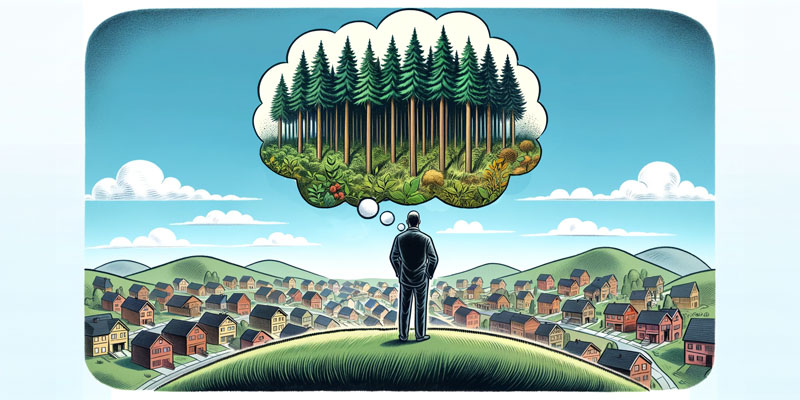
Land use may be the dog that’s not barking in the housing debate.
Catching up on email, I came across this October article from the American Stewards of Liberty about a federal push for conservation areas:
The Service is planning to acquire 250,000 acres of private land in the new federally designated area by offering “voluntary” conservation easements in perpetuity to landowners. Those who do not want to be a part of the program may not escape being targeted. The Service and its environmental organization partners have priority acquisitions in mind. And the agency has an array of regulations and restrictions they can deploy to encourage compliance.
The plan will allow the Service to use Land and Water Conservation Funds to purchase conservation easements in perpetuity on the private lands. Congress appropriates $900 million annually for this purpose as well as for direct acquisition of private lands. Property rights advocates would like to see this funding permanently rescinded as the government already owns 40 percent of America. These funds allow them to gain control over the remaining private lands.
Reviewing the above article, a friend reminded me that Tiverton gives a substantial portion of one of its revenue streams to an agency to buy up land. Some years ago, voters passed a budget resolution reducing the percentage to 10%, but (oops!) the town treasurer neglected to change the payment.
Out of curiosity, I went in search of data about public land ownership, finding this useful interactive tool. Probably because it was so well established by the time government began its land-grabbing practices, our region has largely escaped federal purchases, but public ownership still ads up. According to the associated charts, federal, state, and local governments own 13% of all land in Rhode Island, ranging from 16% in Washington County to just 8% in Bristol County.
That isn’t the whole story, though. In my county (Newport), 5% of privately owned land is locked up in conservation easements. That’s 3,196 acres. In Providence County, this number is 5,158 acres. Statewide, 113,151 acres are either owned by government or locked up in conservation easements. That land could accommodate a huge number of homes and apartments.
I’m definitely not suggesting Rhode Island should wipe away all of its open space, but with all the noise about housing, it’s strange one never hears about these numbers. The implied reason is familiar: The call to “fix” the housing crisis comes with sharp boundaries. Just like we have to “fix” education without reconsidering labor unions or progressive social engineering, we have to “fix” housing without noticing that governments are taking land off the market and making it difficult to build in other ways.
In these heavily proscribed prescriptions, we see the origin of the divisive us-versus-them corrupting our politics. People who want the power to tell other people how to live need the focus always to be on how much more the “haves” can give up, implying that they’re holding out and oppressing everybody else out of greed.
More likely than not, when they have control, the powerful will claim for themselves nice homes surrounded by open space and private views that can never be changed by the peasantry.
Featured image by Justin Katz using Dall-E 3 and Photoshop.

The late, great Dr. Gary North ‘splained it all:
https://www.garynorth.com/public/21310.cfm